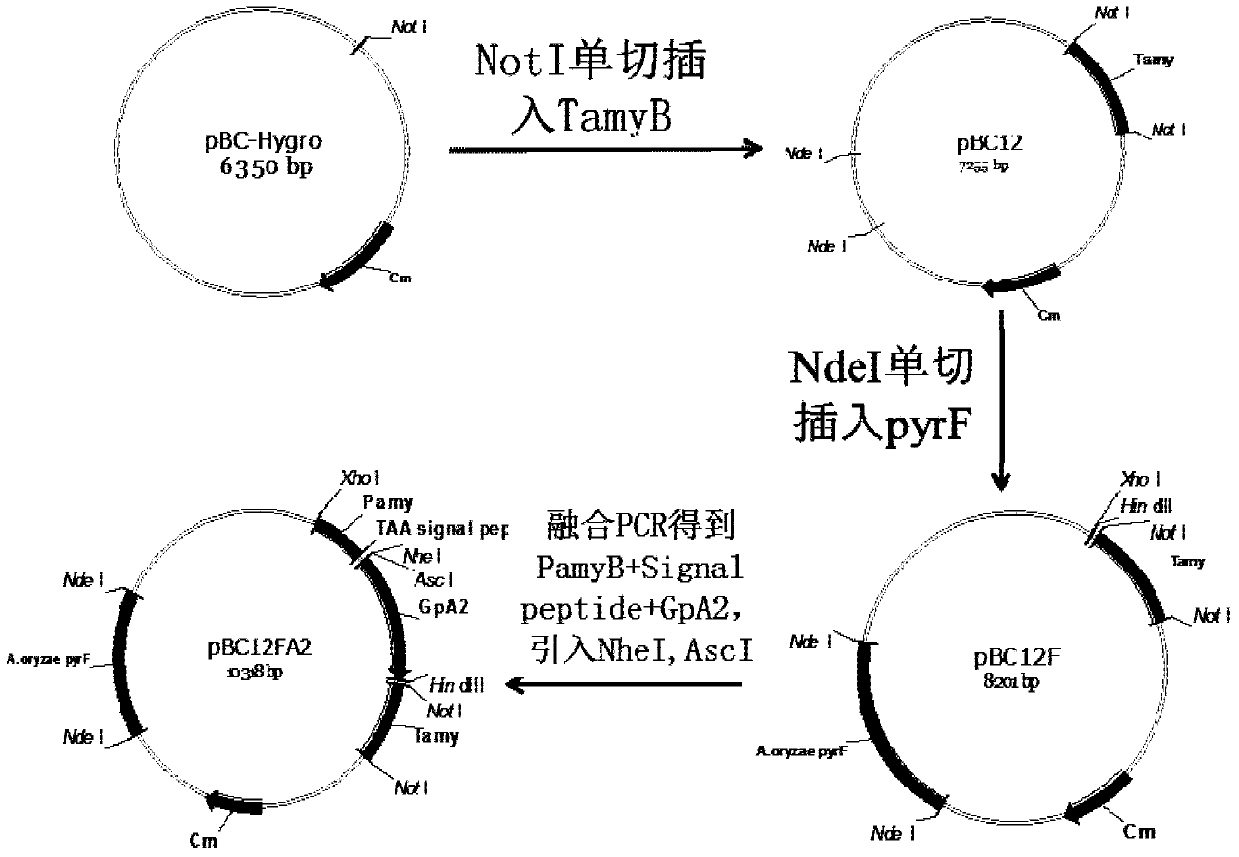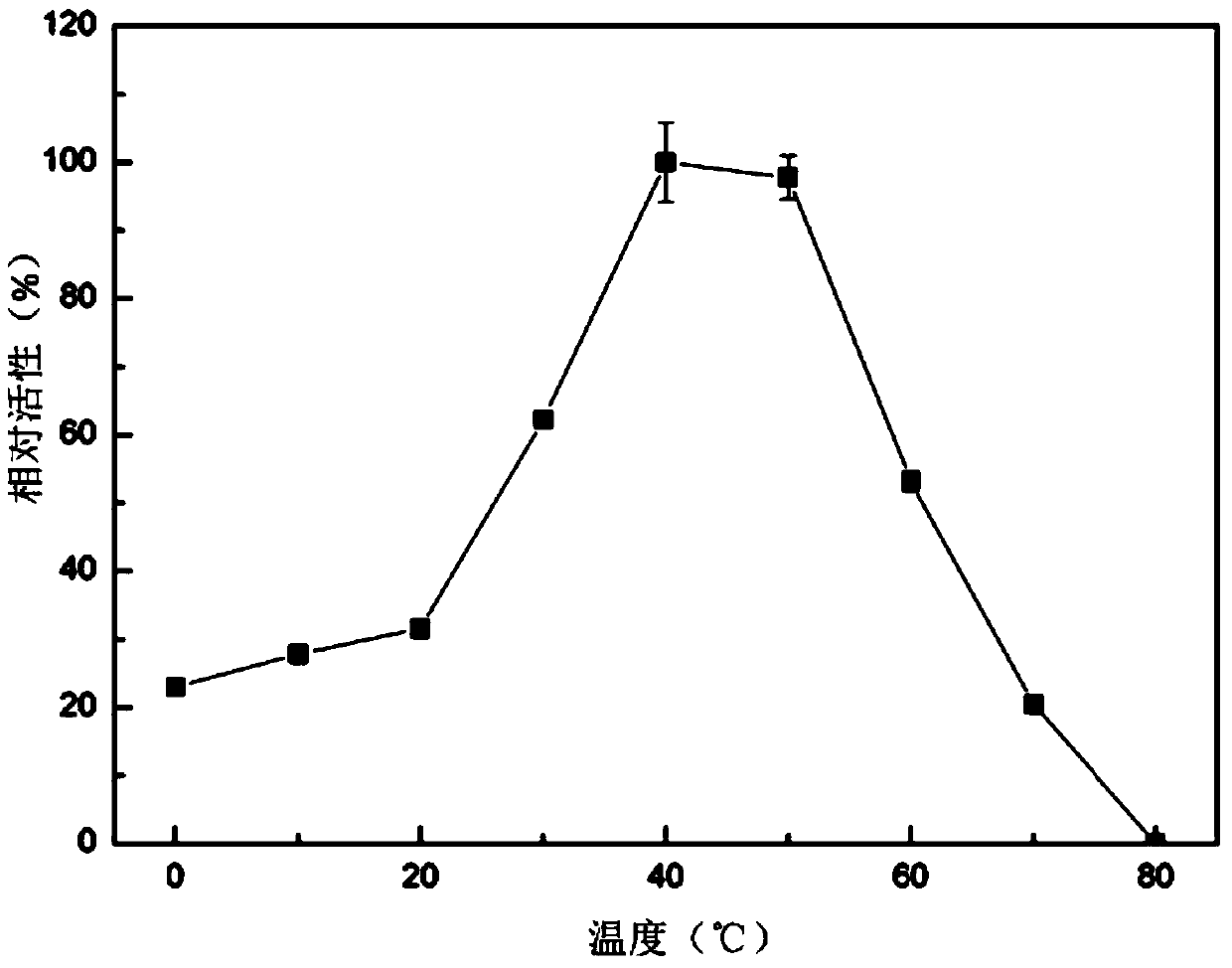Low-temperature alpha-amylase originated from fungus and coding gene and application of low-temperature alpha-amylase
A technology encoding gene and amylase, applied in applications, fungi, genetic engineering, etc., can solve the problems of unresearched enzymatic properties and no separation and purification of amylase.
- Summary
- Abstract
- Description
- Claims
- Application Information
AI Technical Summary
Problems solved by technology
Method used
Image
Examples
Embodiment 1
[0044] Example 1. Amplification of Low Temperature α-Amylase Gene
[0045] 1.1 Strains and their cultivation
[0046] Received Geomyces pannorum AK07KGI1001R1-2(1) from the cooperation project of the Faculty of Biological Sciences, University of Malaysia (bacteria identification NCBI accession number: JF720026.biramy Krishn et al.2011.Extracellular hydrolase enzyme production by soil fungi from King George Island, Antarctica . Polar Biol, 34:1535–1542).
[0047] Wash G. pannorum spores from the 10-day-cultured PDA slant with sterile water, inoculate liquid medium, and culture at 20°C for 7 days to collect mycelia for genome extraction; inoculate starch solid medium with a toothpick, and culture at 20°C After 5 days, the mycelia were collected for total RNA extraction.
[0048] 1.2 Genome Extraction
[0049] Refer to the instructions of the Omega Fungal Genome Extraction Kit
[0050] 1.3 Total RNA extraction
[0051] Follow the instructions of Takara RNA extraction reagent...
Embodiment 2
[0119] Embodiment 2. Containing the construction of the Aspergillus oryzae recombinant expression vector of low temperature alpha-amylase gene
[0120] 2.1. Extraction of Aspergillus oryzae genome
[0121] Aspergillus oryzae RIB40 (National Research Institute of Brewing Stock Culture and ATCC42149) was inoculated on CM medium and incubated at 30°C for 7 days until the spores matured. Prepare an appropriate amount of spore suspension and inoculate it in CM medium liquid seed medium, and cultivate it at 30°C and 200rpm for 2 days until the mycelium concentration reaches 4-5g / L for genome extraction. The method refers to the instructions of the Omega fungal genome extraction kit.
[0122] 2.2. Isolation of Aspergillus oryzae α-amylase promoter (PamyB) and its signal peptide sequence
[0123] According to the sequence of the amyB promoter published on GeneBank, using the above-mentioned extracted Aspergillus oryzae genomic DNA as a template, specific PCR amplification was perform...
Embodiment 3
[0151] Embodiment 3. Transformation of the Aspergillus oryzae recombinant bacteria containing low temperature α-amylase gene expression vector
[0152] 3.1 Preparation of Aspergillus oryzae uracil auxotrophic RIB40-PF1 protoplasts
[0153] (1) A.oryzae RIB40-PF1 (the bacterial strain RIB40-PF1 used in the present invention was screened and obtained by the inventor himself, and the bacterial strain has been preserved in the General Microorganism Center CGMCC of China Microbiological Culture Collection Management Committee, and the preservation number is CGMCC NO : 9129, the preservation date is 2014.05.08.) The spores on the slant were inoculated into the CM liquid medium, cultivated overnight (12~16h) at 200rpm at 30°C, and formed dense and small bacterial balls (d<2mm), washed with sterile water Next, use sterile Microcloth to filter the culture medium to obtain mycelia, and wash with solution I for 2 to 3 times. During the washing process, centrifuge at 6000 rpm at 4°C for ...
PUM
 Login to View More
Login to View More Abstract
Description
Claims
Application Information
 Login to View More
Login to View More - R&D
- Intellectual Property
- Life Sciences
- Materials
- Tech Scout
- Unparalleled Data Quality
- Higher Quality Content
- 60% Fewer Hallucinations
Browse by: Latest US Patents, China's latest patents, Technical Efficacy Thesaurus, Application Domain, Technology Topic, Popular Technical Reports.
© 2025 PatSnap. All rights reserved.Legal|Privacy policy|Modern Slavery Act Transparency Statement|Sitemap|About US| Contact US: help@patsnap.com



